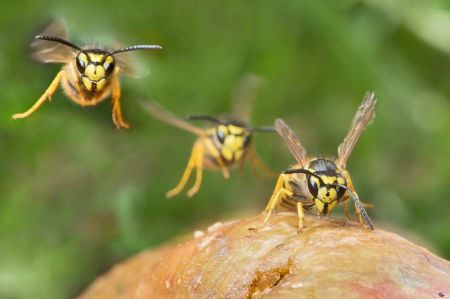Wasps approaching: Don't blow on it.
- Written by Portal Editor
Wasp - The German wasp and the common wasp are solely responsible for the bad reputation that wasps have.
These two species form the largest colonies (several thousand workers) and are the only ones that become aggressive toward humans and even feast on human food ("plum cake wasps"). This is especially the case when the nests dissolve in late summer and the surviving workers roam the area individually in search of food.
A sting releases alarm pheromones that attract other animals and encourage them to sting. The venom causes an allergic reaction in some people.
Wasp - The German Wildlife Foundation recommends passive defense.
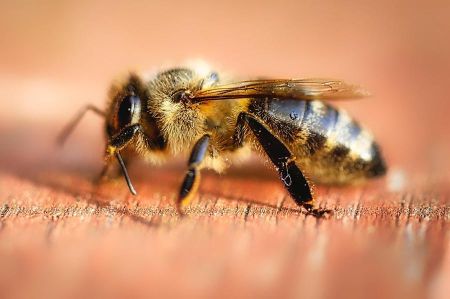 The "common wasp" (Vespula vulgaris) has a "sweet tooth": It flies towards cakes, ice cream, and sweet juices. Every now and then, it will cut itself a piece of steak with its mouthparts; It's for the offspring, who need protein and are therefore fed meat fiber.
The "common wasp" (Vespula vulgaris) has a "sweet tooth": It flies towards cakes, ice cream, and sweet juices. Every now and then, it will cut itself a piece of steak with its mouthparts; It's for the offspring, who need protein and are therefore fed meat fiber.
"Wasps aren't welcome guests at any garden party," says Eva Goris, spokesperson for the German Wildlife Foundation. But how do you keep these flying pests away? "Just don't blow when a wasp is approaching," advises Goris. "Because the carbon dioxide in the air makes the hungry insects even more aggressive."
The rule is: stay calm and fight back non-violently. For example, with a bunch of basil: "Wasps find the scent of basil repulsive – and so they stay away from the coffee table!"
When wasps approach, there are generally three basic rules to follow.
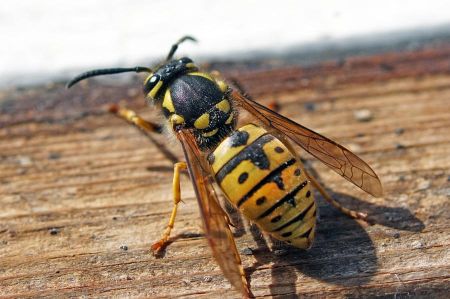 Or turn the tables: deliberately invite wasps. "If you set a table where wasps are at a safe distance, you'll distract the insects and have peace and quiet." "Wasps love grapes," says the spokesperson for the German Wildlife Foundation. "This will appease them."
Or turn the tables: deliberately invite wasps. "If you set a table where wasps are at a safe distance, you'll distract the insects and have peace and quiet." "Wasps love grapes," says the spokesperson for the German Wildlife Foundation. "This will appease them."
When approaching wasps, there are three basic rules to follow: Don't swat them, don't make sudden movements, and don't crush them! Even dead wasps can sting: a reflex causes the venom to still be pumped out of their sting.
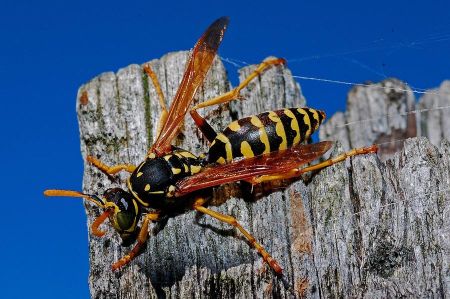 Wasps' bad reputation is undeserved, by the way. Who knows that wasps keep many pests away from humans? They carry thousands of insects, mostly flies, aphids, and other pests, into the wasp nest as food.
Wasps' bad reputation is undeserved, by the way. Who knows that wasps keep many pests away from humans? They carry thousands of insects, mostly flies, aphids, and other pests, into the wasp nest as food.
They also help pollinate flowers and are popular with birds. Therefore, the German Wildlife Foundation is calling for more tolerance and solidarity with the workers, whose end of life is already approaching in the fall.
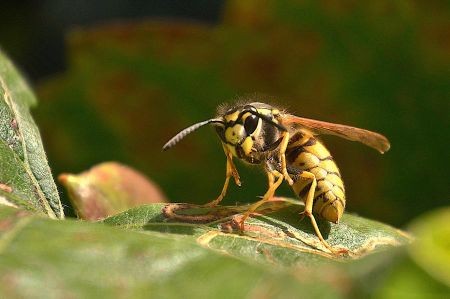 Wasp or bee? You can tell them apart by more than just their waists!
Wasp or bee? You can tell them apart by more than just their waists!
- The famous wasp waist is their distinguishing feature; Bees and bumblebees are rather rounded, while the slender wasp is particularly narrow in the middle of its body. It has a real "waist."
- Wasps are clearly defined in color and black and yellow, while bees' yellow is more of a rich brown.
- Bees are "fur-wearing"; their bodies are hairy, while wasps' bodies are very smooth and hairless.
- Bees gather pollen and nectar; they won't find what they're looking for on coffee tables.
- Bees only sting in absolute emergencies, as the sting costs their own lives. The stinger has barbs and is torn from the abdomen when stinging. Wasps, on the other hand, survive a sting in human skin without further consequences.
Press contact:
Eva Goris, Press Officer, Christoph-Probst-Weg 4, 20251 Hamburg,
Phone +49 40 9707869-13, Fax +49 40 9707869-19,
This email address is being protected from spambots. You need JavaScript enabled to view it.
Entrance photo by Bernie Kohl
Please also read:
